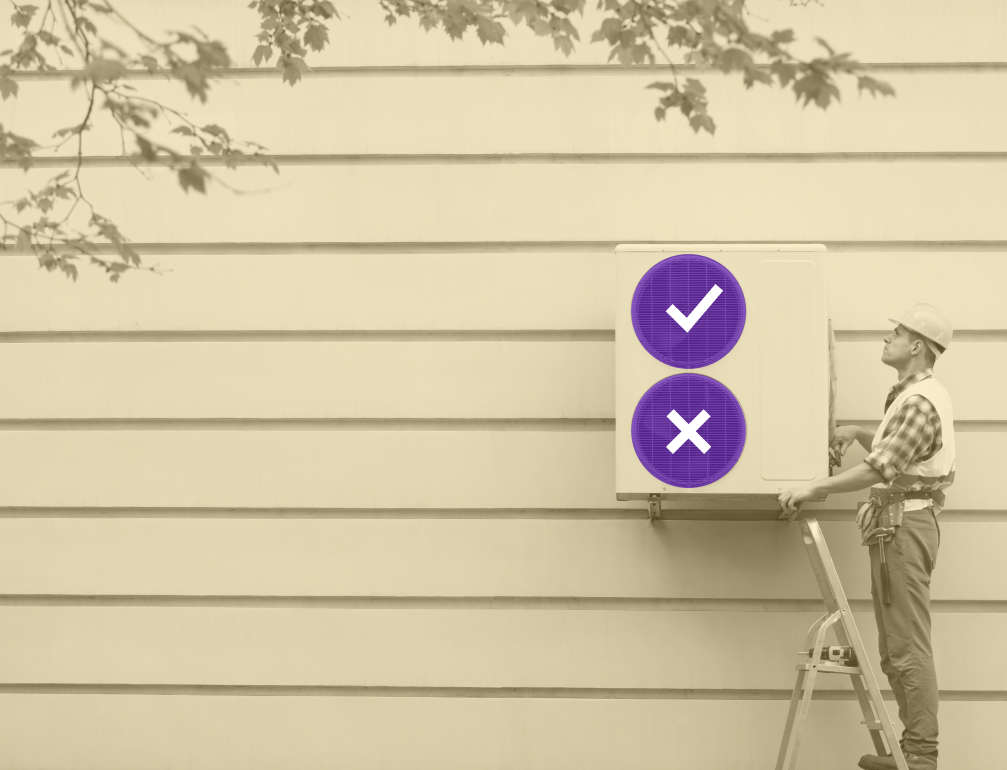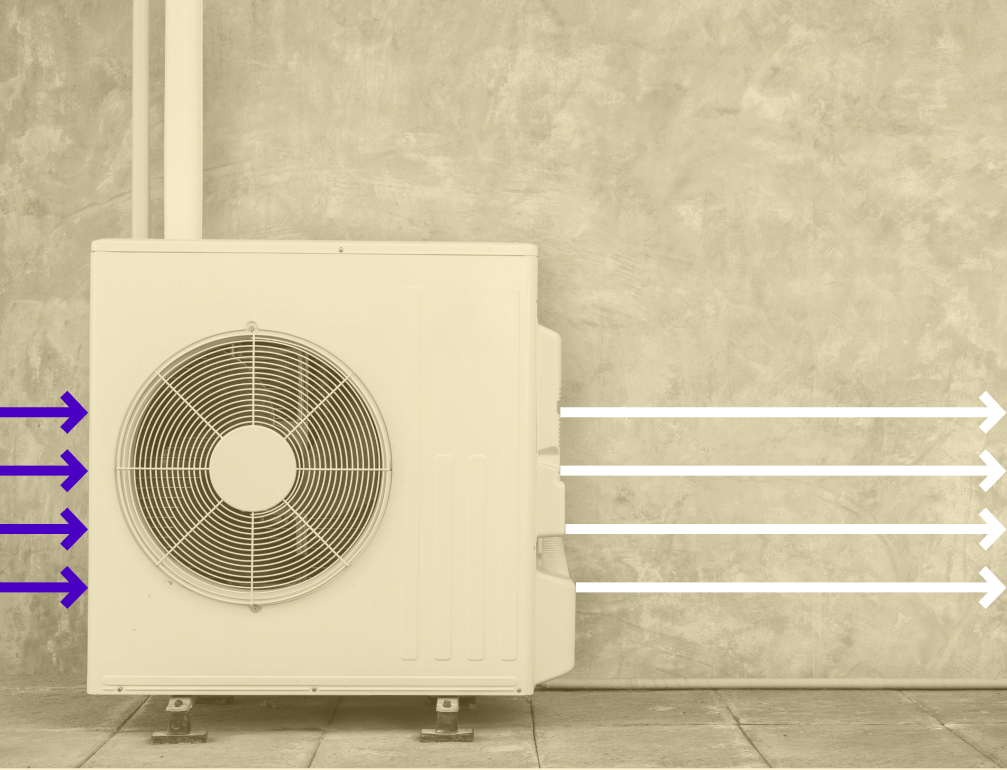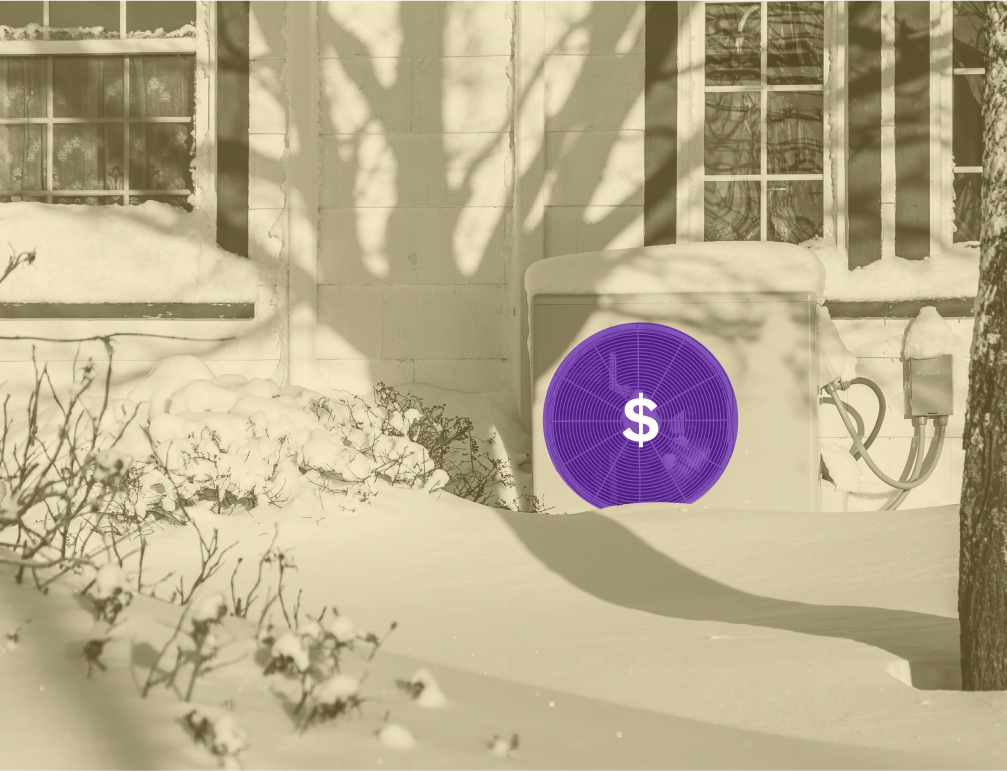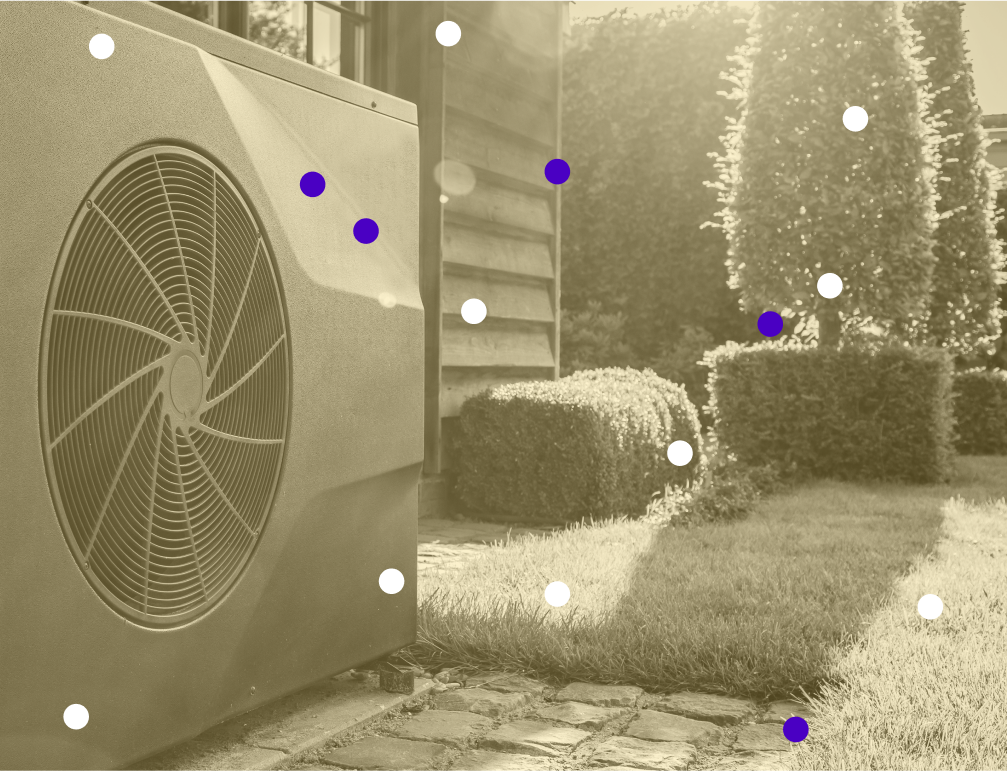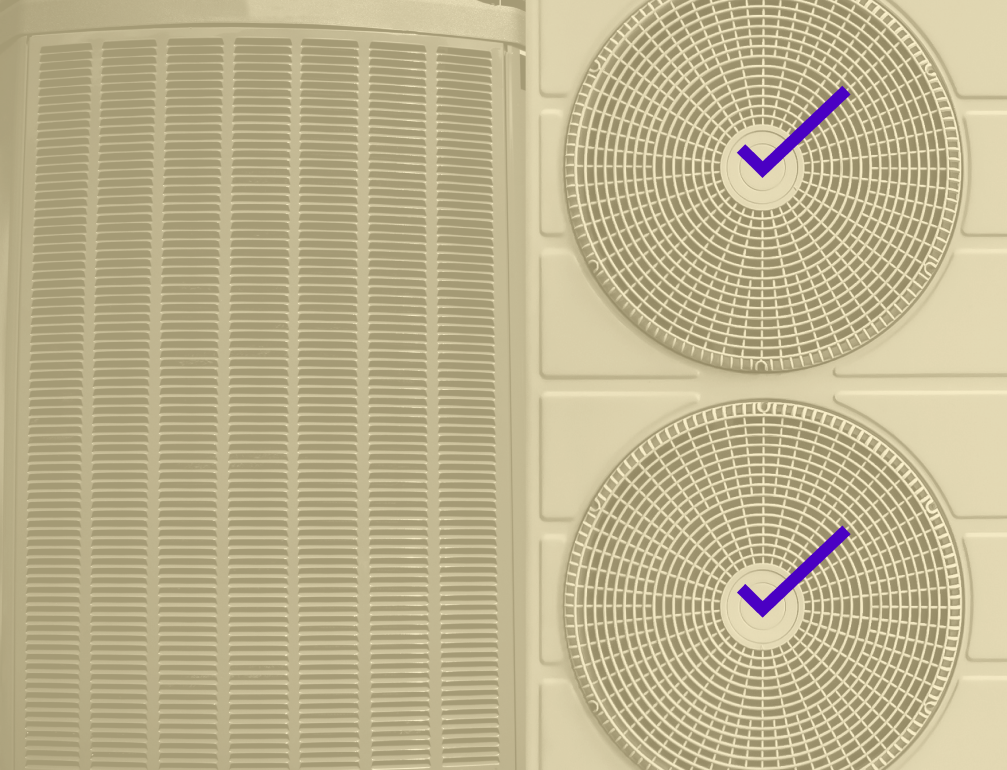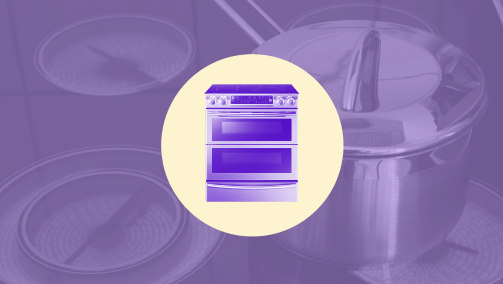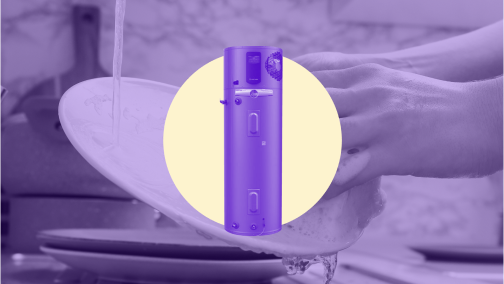PROJECT
Upgrade your heating and cooling with a heat pump
The best way to heat your home in the winter and cool your home in the summer is with a heat pump. Heat pumps are more energy efficient than other heating and cooling systems like gas furnaces, oil heat, and central air.
- Why do it? Homes with heat pumps use less energy and save money on their utility bills.
- When? When your current HVAC unit is nearing end of life (usually about 15 years)
- Who is this for? Whole-home heat pump systems for homeowners; portable and window units for renters

Project Snapshot
Massive
Hard
No, call an HVAC contractor
$5,000 - $30,000 Read more >
10 - 20 years
Benefits
Up to $1,000 per year; average household saves $370
Delivers both heating and air conditioning
Heat pumps are ~3x more efficient than most fossil-fuel heating systems
30%, up to $2,000 Calculate your personal savings >
$8,000 Available late 2023
Want to make a plan to electrify everything?
Whether you’re a homeowner or renter, there’s no better time to get started than right now. But it’s tricky to know what to do first. We’re here to help.
Your heat pump project checklist
Use this step-by-step guide to help you successfully choose, purchase, and install the right heat pump for your home.
Step 1: Get an energy audit (optional)
| Step | Time | Typical Cost |
|---|---|---|
| Particularly if you live in a cold climate, consider getting an energy audit to measure how well your home is sealed and insulated and inspect your current appliances. Check with your utility to see if you can get a free or discounted energy audit. You can also get a 30% tax credit up to $150 for an energy audit. | 1 day for audit, then a weekish for results | $0–$500 |
Step 2: Make your home heat pump ready, if needed
| Step | Time | Typical Cost |
|---|---|---|
| Depending on the results of your energy audit, you may want to add insulation or air sealing to your home to make it more energy-efficient, which can allow you to install a smaller, less expensive heat pump! You might also need to upgrade your electrical panel or wiring, upgrade or install ductwork, and make space for new equipment. | A few days to a few weeks | $0–$10,000 |
Step 3: Call HVAC contractors and get quotes for heat pumps
| Step | Time | Typical Cost |
|---|---|---|
| Check out our guide to getting heat pump quotes. Try to get at least three quotes! You may want to find an HVAC contractor who mentions heat pumps on their website. Request quotes for a variable-speed (aka “inverter-driven” or “variable capacity”) heat pump. Make sure that the contractor you plan to select is going to do a Manual J calculation to properly size the system for your home. They will likely either include this in the quote, or charge you for it up front and offer to credit it back to you if you choose them for the project. | A few hours to a few days | None, or included in Step 4 cost |
Step 4: Pick a contractor and install your heat pump!
| Step | Time | Typical Cost |
|---|---|---|
| Make sure you know what type of heat pump you’re getting in each quote so you can compare apples to apples. Also, if you pay federal income taxes and install an efficient heat pump, you may be eligible for a $2,000 tax credit! Ask your contractor if your heat pump qualifies. Select a quote, install your heat pump, and enjoy your comfy home all year long! | A few days to a few weeks | $5,000 - $30,000 |
Step 5: Set it and forget it (but also maintain it)
| Step | Time | Typical Cost |
|---|---|---|
| Heat pumps work best when they maintain a steady, even temperature all the time. So set it at a comfortable temperature (even if it’s higher or lower than your boiler or old AC), and then just leave it alone and let it run constantly when it’s hot or cold out (don’t worry, running longer leads to better temperature control, air flow, filtration, and efficiency). Set a filter clean/change schedule on your calendar based on the manufacturer’s instructions. Get it serviced by a professional once a year (or twice a year if it’s your primary heating and cooling system). | 30 minutes once or twice a year | $200-$500 per year |
FAQ
Question 1: Do heat pumps work in cold weather? Yes. Thanks to technological breakthroughs in recent decades, heat pumps designed for cold climates can keep your home warm — without a backup heating source — even when outside temperatures are below -20°F. Find out more about how heat pumps work.
Question 2: What is a mini-split? Is it the same as a heat pump? A mini-split is a ductless heat pump — an appliance that can both cool and heat your home. But unlike a traditional air conditioning or heating system, mini-splits offer “zone-control,” enabling each indoor unit of a mini-split to be set to a different temperature.
Question 3: Are there tax incentives and rebates for heat pumps? Yes. You may be eligible for a 30% tax credit (up to $2,000), which resets each calendar year. And starting in late 2023 or early 2024, you may also be eligible for a rebate of up to $8,000 based on household income. Check out our Inflation Reduction Act (IRA) savings calculator for personalized estimates.

